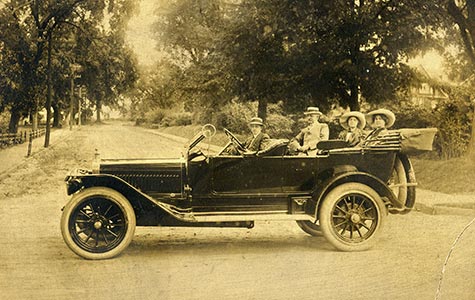Posted on 3/16/2020

To our loyal customers, we wanted to update you about our efforts during this uneasy time. We are open for business and operating normal business hours during the concern of the Coronavirus. We have been monitoring the Coronavirus updates from WHO and the CDC and are doing our best to adhere to their suggestions at slowing the spreading of this virus. We are doing all in our power to keep our facility open so that we can keep your car on the road. The health and well-being of our customers, employees and surrounding communities are our utmost concern. If you have vehicle concerns or need maintenance and are concerned about the virus we have: A drop off box and after hours secure key pick up box available for your needs. We have call to pay options so you can pay from the comfort of your own home. If you have any concerns about leaving your home, we would be happy to pick up your vehicle from your house, and return it to you when the maintenance or repairs are complete. Our waiting ... read more
Posted on 6/14/2019

While many of us think of the first vehicles being the model T, many years before that, in approximately 1830, the first buggy with an electric motor traveled a short distance in Scotland. The battery had galvanized cells and was not rechargeable, limiting the ability of travel – however, progress was made. Here in the US the first electric car was introduced in the year 1890 in Des Moines Iowa by a chemist named William Morrison. His six-passenger vehicle sped down the road at 14 miles per hour, but William showed that it was possible to power a vehicle with electricity. In 1900, one third of the vehicles on the road were electric. They had a lot of momentum in sales in the early 1900’s. At that time there were really three ways to power a vehicle, Steam, Electric, and internal combustion engine. (Gasoline and diesel) The Steam engine was a lot of work to get going and took a lot of time to warm up. The gasoline motor was hard to start, and was not easy to shift either ... read more
Posted on 5/30/2019
The vehicles on the road today, for the most part, are driven by the internal combustion engine. While many of us think this is the way it’s always been, the electric vehicle has been in existence since approximately 1830, when an inventor from Scotland was able to move his buggy with an electric motor and galvanic cells. The batteries were not rechargeable, but he was able to move a short distance. At the turn of the century, electric cars were being produced but were not as popular due to price, electrical availability, and range. It was easier for a driver to take extra gasoline along than to charge his batteries. Especially when most of the population lived out of the cities at that time. Currently, electric vehicles come in the form of cars, trucks, trains, boats and submarines. While powering many different vehicles, we’re going to concentrate on cars and light trucks. I’ve heard a businessman say, that to disrupt an industry, the product has to be “bette ... read more